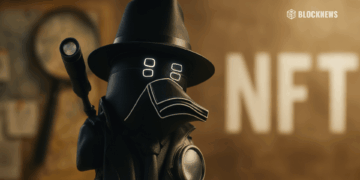ChainGuardians will unveil their Meta Street Wear line during this year’s New York Fashion Week, simultaneously showcasing both virtual and real-life on the catwalk and in the Metaverse. Its limited-edition Meta Street Wear line, labeled “Phygital Fashion,” was created by the company’s immensely highly-praised blockchain, Superheroes.
Attendees can experience the Meta Street Wear range while concurrently moving between the natural world and the Metaverse, all thanks to the ChainGuardians’ virtual reality environment. It may all sound surreal, but this is the kind of future Metaverse supporters wants to present to the mainstream.
The Metaverse Way of Fashion
The entire line aims to follow the trend of video game characters by developing “digital twins,” which let users wear stuff that their gaming characters might wear in real life.
ChainGuardians will display “digital twin” clothing that uses VR technology. This clothing will allow users to experience the many NFT utilities and wear it in the physical world and on their metaverse avatars when Web3 begins to normalize and expand the fashion area.
In her statement, ChainGuardians co-founder Emma Liu said, “We believe it is not enough to bring fashion into the Metaverse. It is time to create a bridge that delivers the vast utilities of the Metaverse directly into the fashion world.”
An Invite-Only Event
The visitors will immerse themselves in a virtual fashion setting and try on items from the brand’s Meta Street Wear collection. Additionally, there will be an Augmented Reality (AR) space where they can interact with digital models dressed as ChainGuardians and take pictures of themselves wearing the suit using a QR code.
The ChainGuardians Runway presentation will introduce the Meta Street line to invite-only fans and show how the limited-edition items will award owners with an NFT using NFC technology, giving them unique exclusive proof of ownership.
Still Far From Perfection
Many collaborations between bluechip companies and blockchain startups displayed forms of a “test phase” to see if the Metaverse will indeed morph into the future of business and technology. While some folks support the idea of a blockchain metaverse, many remain skeptical about how it will end.
The previous fashion weeks, including Milan and the first-ever Decentraland, were met with highly mixed reviews. While combining the virtual and physical worlds may sound like a far-fetched dream, the companies tried to make it a reality. Unfortunately, it wasn’t as grand as the fashionistas expected.
For example, the Decentraland Fashion Week showed a rather lackluster event with outdated graphics, odd ragdoll physics, several glitches, and an overall bland live event. On Twitter, some criticized it as “trying too hard,” while others say that the old social game, Second Life, looks livelier than what Decentraland hosted.
In August, Meta CEO Mark Zuckerberg also displayed “the power” of the Metaverse in a live stream event, only to be met with laughs and criticism. Zuckerberg presented himself as his virtual avatar “exploring” Horizon World, a metaverse social game with famous landmarks, including the Eiffel Tower and the Basílica de la Sagrada Família. The people who disliked it later turned the presentation into memes, including captions saying,
“Reminder that they invested billions of dollars into this” and “VRChat did better.”
That same month, the metaverse game, Avakin Life, presented a virtual popstar named Polar. She is considered the first metaverse-exclusive idol singer with original songs and a unique personality. While metaverse supporters may see this as “the future” and innovation in the music industry, the concept was already done – exactly 15 years ago by the name of Hatsune Miku, a Japanese computer-based singer who performs live as a hologram. A decade later, Virtual YouTubers (Vtubers) existed, performing live streams and real-life concerts but still in their virtual forms.
NFTs may be the future, according to enthusiasts, but what the companies keep presenting at the moment hasn’t been pleasing the mainstream crowd. They will need more convincing reasons to turn this into a global norm.














